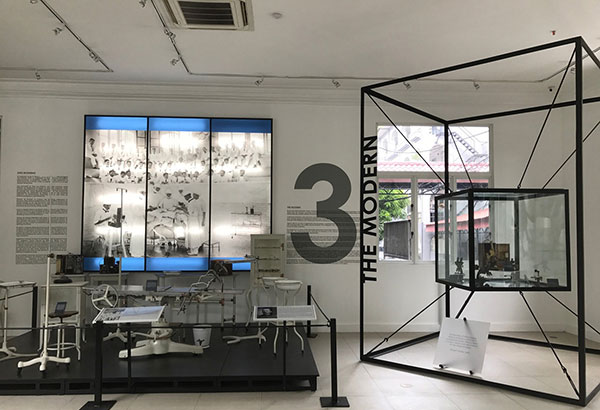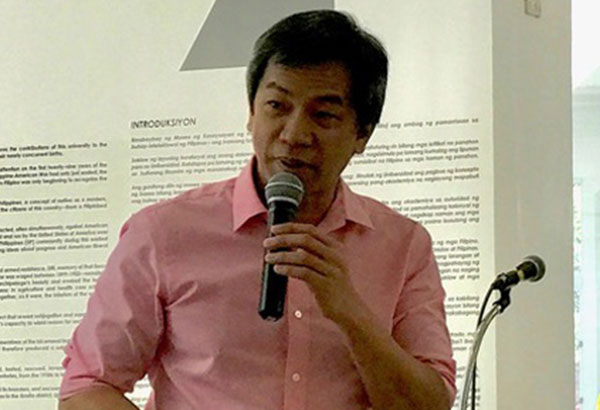More than a hospital

Philippine history in a medical context
Like most of you, I’m not too thrilled by hospital visits — whether I’m the patient or the visitor — being all too aware of the implications of needles, tubes, X-rays, and little pink slips. Like a doctor-friend jokes, a hospital is just about the only place where the word “negative” sounds good.
That’s why I was pleasantly surprised by what I found when I dropped in at the Philippine General Hospital on Taft Avenue in Manila last week. Of course it helped that I wasn’t there for a check-up or to see someone in bed, but rather to be briefed — along with a group of regents and officials from the University of the Philippines — on how PGH was faring.
And why UP? Because, almost from the beginning more than a century ago, UP and PGH have been inextricably connected. I took a look back into UP’s history and discovered that earlier than the PGH and even UP itself, the American colonial government opened the Philippine Medical School in June 1907 to meet the need for more physicians in the Philippines.
The University of the Philippines was established a year later, and the Philippine General Hospital, created in 1907, opened its doors to the public in September 1910. While it originally fell under the Bureau of Health, PGH was later moved to the Department of Public Instruction, and has always served since as the clinical laboratory of the UP College of Medicine, which in turn now is now part of UP Manila.
UP doctors are acknowledged to be among the nation’s — indeed among the world’s —best. That’s possible because — unlike many other medical schools—UP medical students can step into PGH and learn not only from the best mentors but also the broad variety of patients and ailments constantly streaming in. In other words, PGH serves not only the public but also the training needs of UP’s College of Medicine; it’s a training facility and a research institution at the same time that it’s the country’s largest and most popular public hospital. (Patients need not worry; they could be diagnosed by doctors-in-training, but those diagnoses are double-checked by residents or senior physicians; thus they get screened twice.)
When many Filipinos think of “PGH,” what often comes to mind are the long queues and the crowded charity wards. They’re still there — and will be until we pour many billions more into public health — but I was glad to discover that yes, it meets people’s basic medical needs, but it’s also gone far beyond that toward becoming, in the words of its director, the celebrated neurosurgeon Dr. Gerardo “Gap” Legaspi, “a world-class hospital accessible to all.”
Dr. Legaspi gave us the lowdown on what’s been going on at the 110-year-old hospital, which occupies 10 hectares out of UP Manila’s 14. It operates almost 1,500 beds, about 350 of which are private. It serves about 600,000 patients a year (500,000 of them outpatients), and its doctors undertake 30,000 operations. Its eye doctors alone see almost 60,000 patients a year, mostly for cataracts; internal medicine tops the list, drawing over 100,000 patients afflicted mainly by hypertension and diabetes. PGH employs 4,400 people on a budget of about P3.1 billion, most of which comes from the government. With PhilHealth coverage now universal, and by accepting private patients, PGH generates enough to answer for a substantial portion of its expenses.
Its function as a research and teaching institution attached to the national university has also allowed PGH to surge forward in its modernization. Many new buildings such as that of the National Institute of Health are coming up, under the watchful eye of UP Manila Chancellor Dr. Carmencita “Menchit” Padilla, herself a highly regarded pediatrician and geneticist.

PGH director Dr. Gap Legaspi reports on the hospital’s development.
Thanks to all the recent upgrades, “You can now get your lab results on your smartphones,” Dr. Legaspi says, and the pay ward looks as comfortable and well-furnished as a boutique hotel, at rates far lower than those of the usual top-tier options. But more importantly, PGH has become an acknowledged center of excellence in such areas as infection control, children with disability, minimally invasive surgery, stereotactic radiosurgery (focused radiotherapy), and liver transplants. Its doctors can perform robotic surgery, and apply genomics in cancer treatment.
These monumental strides aside, what also impressed me on our visit was the venue in which our briefing was held, a cultural gem that I didn’t even know we had in the UP System — the UP Manila Museum of a History of Ideas. Located directly across the main entrance of the Department of Justice on Padre Faura, the graceful and tastefully appointed museum offers a unique presentation of medical memorabilia in the context of a university’s and a nation’s emergence.
The museum was a flagship project of the UP Centennial under then President Emerlinda R. Roman, and opened in October 2014. Curated by Marian Pastor Roces, the exhibit tracks six ideas that UP cultivated in the period of its establishment: the University, the Modern, the Tropics, the Secular, the Nation, and the Filipino. Architect Ed Calma oversaw the design for the restoration of the 1930s heritage building, which had once served as the college’s infirmary and then as its school of dentistry. (It’s open Tuesdays to Saturdays, with a modest entrance fee, discounted for students and seniors.)
It may seem odd for medicine and history to be put under one roof — it’s not a collection of medical curiosities as such places tend to be — but when you think about it, a country’s state of public health and the kind of medical practice you can find in it will often have much to say about its level of historical development, notwithstanding whatever claims the politicians make. How well we treat and care for our poorest citizens can be as good a test as any of our national well-being.
In that respect, the Philippine General Hospital — always more than a hospital — remains an outstanding showcase of medicine in the service of the people, service delivered in UP’s signature style: with honor, excellence, and compassion at heart.
* * *
Email me at jose@dalisay.ph and visit my blog at www.penmanila.ph.



















